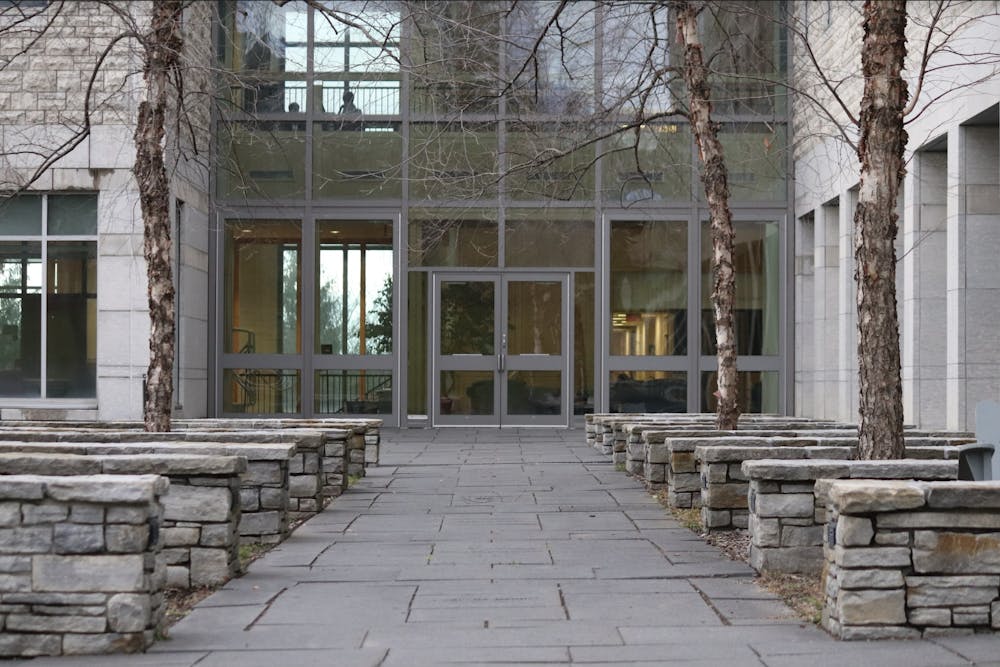We feel as though we have a pretty good idea of what the average BiHall-er is experiencing. We both took three lab classes in the fall, and one of us was a teaching assistant for a fourth, so we know the junior-sophomore STEM community fairly well.
Although three-lab-class semesters are less common, we find that it is exceedingly typical for junior and sophomore STEM majors to be concurrently taking two classes that have a lab for multiple semesters. This adds an extra six hours of time physically spent in class (two labs x three hours), in addition to whatever homework the lab classes are assigned (usually consisting of pre-lab work and post-lab work each week as well as lab reports). This calculation is based on the typical lab class — but some students in chemistry “super-labs” spend six hours in the lab for that one course. And beyond lab time it’s important to account for the hours spent and homework assigned in the three-hour lecture portion of such classes. Students often say that the lecture and lab feel like completely separate classes with separate assignments.
And the kicker is this: What we have just described only accounts for HALF of the credits that a student is expected to take per semester. A six-hour total lab-lecture class only counts for one credit, which is the same number of credits that any other three-hour per week class at Middlebury counts for. All Middlebury students are expected to take four classes per semester which would total 12 hours of class a week (four x three-hour classes), but many STEM students are taking up to 18 hours because of the additional six hours they spend in labs. Nonetheless, this 18-hour course load still receives the same number of credits per semester that a 12-hour course load would.
To demand this much work and time from STEM students and give the same amount of credits to non-STEM students is not a fair practice. Giving additional (partial) credits for lab classes would help to solve this unfair practice by allowing STEM students to take three classes (some with labs) but receive a representative amount of credits so that they can stay on track to graduate. This would also give students more flexibility in their schedules to complete homework and participate in extracurricular activities.
This system would also allow STEM students to earn sufficient credits to meet graduation requirements during their lab-heavy semesters without having to spend much more time in class than their non-STEM major peers. We feel strongly that this would improve mental health amongst overworked STEM students. In addition to less time in class and a more manageable workload, this would help alleviate worries about graduating on time or needing to make up a class in a later semester. It seems reasonable to be giving credits that truly reflect the amount of time actually spent in class. In fact, many other institutions do this as normal practice, giving additional credits for the hours spent in the lab.
Additionally, lack of class availability due to Covid-19 is still very much affecting class registration, which has disproportionately affected STEM majors that require numerous lab classes. Since Covid-19 was an unforeseen roadblock in many STEM students’ schedules, it caused them to wait to take lab classes until classes returned to fully in person, meaning students are effectively “behind” in their major. This furthers the need for students to double or triple up in their lab classes.
Another class scheduling issue is that these classes include the three-hour lab sections, which almost always meet from 1:30 p.m. to 4:15 p.m., meaning students enrolled in those classes cannot take any courses starting between 12:15 p.m. and 3 p.m. This inflexibility continues to limit the selection of classes that many STEM majors have to choose from and makes it harder to fulfill their major requirements, academic categories and cultures and civilizations distribution requirements required to graduate.
Lastly, we want to talk about Middlebury’s recent addition of half-credit classes. Half-credit classes are courses that either meet for around half the amount of time as typical classes at Middlebury or at “half strength.” For each of these courses, students are given 0.5 credits, accurately representing the amount of time spent in class. Middlebury has set a precedent for receiving a partial credit for a class that meets for a proportion of a standard one-credit class. Therefore, it is reasonable to give more credits for classes that meet for more time than the typical three hours per week.
The combination of additional time spent in class, the necessity to take two (or more) labs a semester and the extra stress that these STEM students feel makes it paramount that this unfair practice is corrected and that lab courses count for more than one credit.
Clara Sandberg is a member of the class of 2024.5, and Raymond Grocela is a member of the class of 2024.




